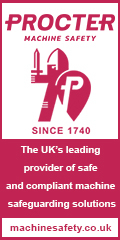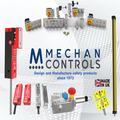
Posted to News on 19th May 2016, 17:04
How to manage PLC program quality in automotive production
In the automotive sector, high quality plays an important role - and this is already clearly visible in the production process. In order to handle the complex programs of logic controllers, it is advisable to introduce an analysis tool for measuring the quality. PLC Checker from Itris Automation has demonstrated in practice how it significantly enhances the quality of PLC programs written to run on PLCs from various suppliers.
Production cycles for vehicles are continuing to reduce. At the same time, model diversity is increasing. Due to these facts, the automotive industry has always been one of the first to automate processes to ensure precision and reliability with growing flexibility. Innovations in automation are quickly integrated. Software engineering plays an important role in this process, as it influences a large portion of costs and time in the whole automation system, but manual processes are still predominant for this task.
Furthermore, automating the facilities in the automotive sector has some particularities: subcontractors for the production planning work for car manufacturers over long periods and support them at their different facilities all over the world. In the various factories, PLCs from different suppliers can be found. Moreover, there is rarely just one planning team assigned to a certain project.
Ensuring consistency in engineering PLCs
Despite this diversity, the automation engineers in the automotive industry need to achieve consistency in PLC programming. Oliver Gekeler, managing director of AutoSiS, Itris Automation's distributor in Germany, states: "This is necessary for an easier maintenance and service. Therefore, the automobile companies define programming rules and hand them to their subcontractors and suppliers." For example, predefined terms and libraries aim at enforcing a homogeneous data flow.
Because of the high complexity of PLC programs, even the most common errors may appear: forgetting an input or an output or misplacing a copy-and-paste action. Errors might also occur in the design of the code, such as reading of variables before they have been written, or overlapping memories.
In order to avoid such errors in the automotive sector and achieve program consistency, a systematic quality management method for PLC programming has to be established. A very useful tool in this process is PLC Checker, which undertakes the automatic analysis of PLC programs.
Automating automation
Productivity and quality of PLC programs are significantly increased with this tool. PLC Checker has 40 predefined coding rules, and some of the PLC Open coding guidelines are integrated. One of these guidelines is that backward jumps are forbidden. Additionally, physical outputs are to be written only once. Overlapping variables have to be excluded and there are rules for naming conventions. Gekeler comments: "These predefined rules can be altered and adjusted to fulfil customer needs."
With PLC Checker, PLC programs for all leading PLC vendors such as Siemens, Phoenix Contact and Schneider Electric can be reviewed quickly for their compliance with a set of programming rules. This is of benefit in the automotive sector, because various brands appear in the same factory. With PLC Checker, the user has the same interface for his analysis, no matter which PLC it concerns.
Being able to outsource programming with the option of easily verifying its compliance with programming guidelines in an automated fashion is another advantage of using the tool. The complexity of installations at automobile factories often includes multiple suppliers. Gekeler emphasises: "But even within the automobile company, many engineers work on the programming of PLCs and each one of them defines the characteristics of a program differently." Checking manually becomes obsolete; with PLC Checker, software engineering is heading towards automating automation.
Motivation to use the tool
The motivation to use the software tool in the automobile industry is obvious. It becomes nearly impossible to analyse manually whether a newly developed PLC program is compliant with a guideline containing dozens of pages.
However, within just a couple of minutes, PLC Checker generates a report of a very detailed, exact and complete analysis of the PLC program. Gekeler states: "The user finds out which rule has been violated in which variable or block of the program." The consistency achieved through this process helps in maintaining the programs easily. The results are accessible for all participants of the process on a dedicated server, which can be cloud-based or installed in the customer's facilities.
Evidence of its abilities
The quality tool has proved its success in many projects in practice. For example, PSA Peugeot Citroen ensures PLC program consistency for all of its programs, even though they come from different suppliers. PSA Peugeot Citroen's PLC programs' life cycles are often over 10 years. The company therefore defined a format as a reference for all PLC programs to facilitate maintenance. Thanks to PLC Checker, all subcontractors are following more than 70 PSA-specific programming rules.
Some companies have decided to use PLC Checker systematically in order to follow the program development process done either internally or by system integrators. According to Gekeler, the automotive sector in Germany is very interested in the tool: "We ran a number of pilot projects in the last couple of months." The supplier of the software tool demonstrates a high flexibility in its license models: customers in the automotive often buy a site license for PLC Checker. Gekeler adds: "It is also possible to purchase a number of analyses or select the user license model." That way there are various possibilities to pursue higher quality and efficiency in PLC programming.
Follow the link for more information about PLC Checker and have a free online trial.
Want the latest machine building news straight to your inbox? Become a MachineBuilding member for free today >>

















